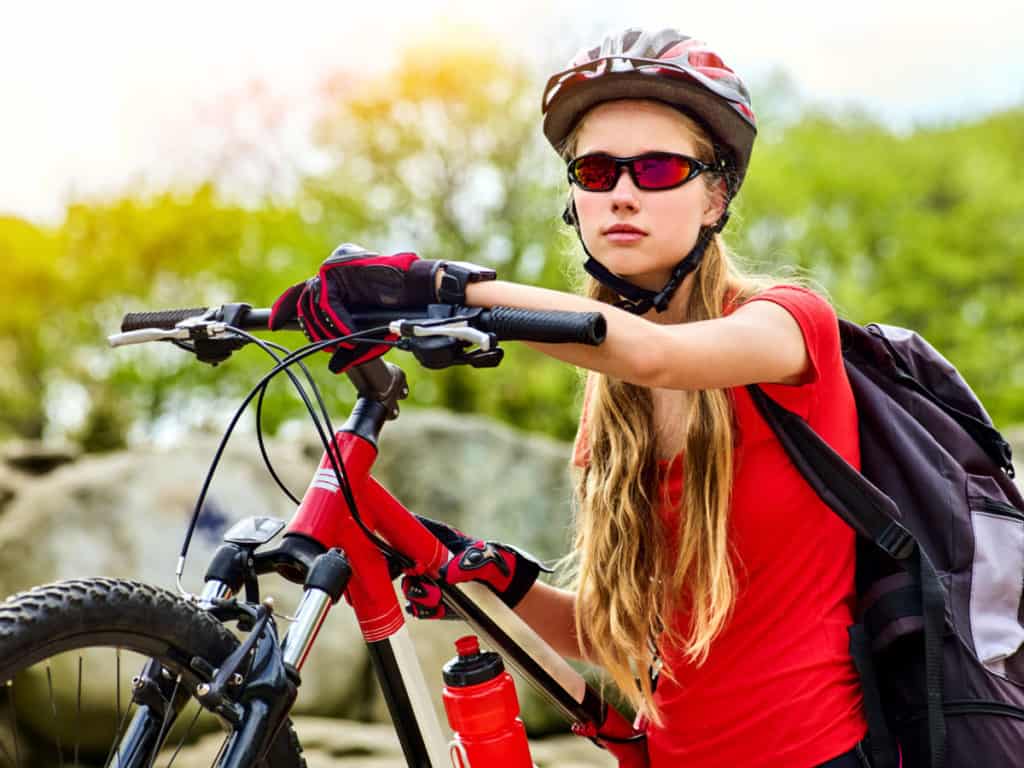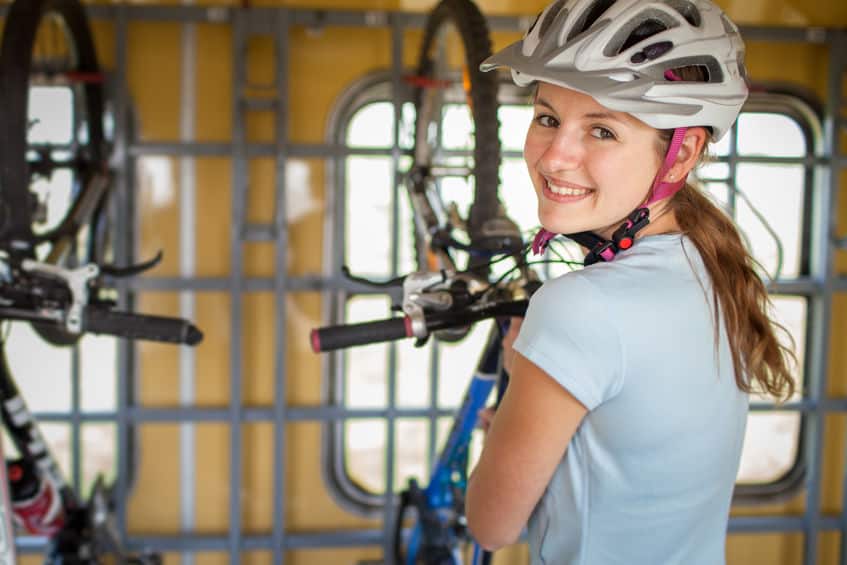Most might agree that a teenager is either the best or the worst age to get a mountain bike for. On the one hand is the fact that they are usually in their growth spurt years and are likely to soon outgrow whatever bike you get them.
The best size mountain bike for a teenager will depend on the kids height. Unfortunately because teenagers normally experience growth spurts they might grow out of the bike quickly. You will need to consider the wheel size and frame size when picking out your bike.
On the other hand is the fact that high school can be a great age for a teenager to have a bike in order to get them biking on the cross country trails around their area out in the fresh air instead of doing other, less preferable activities. However, first you have to get them a bike that fits, and unfortunately there is no such thing as a one-size-fits-all when it comes to teens and mountain bikes.
How To Determine The Right Size
Finding a mountain bike that is the right size is very important, particularly if your teen doesn’t have a whole lot of experience on a bike yet. Too large and it will become too hard to control, especially when they need to stop and start, and this in turn will result in more crashes. This can not only cause damage to the bike but it can also make your teen not really care to get back on and try again.
Getting a bike that is too small on the other hand will be quite uncomfortable to ride for a number of different reasons and will only get worse as you teen finishes growing. The first thing that you will want to consider is the height of the teen that you are buying the mountain bike for.
If your teen is still small, then you should of course go with a smaller size bike. For example, a teen that is still under 4’6” or so should consider going with a 20” wheel size. A teen that is taller and up to around 5’ would be far better suited for a 24” wheel size.

A 24” wheel size is actually the largest of the kid’s bikes, so if your teen is taller than 5’ then you would likely be better off trying them out on a small 26” adult mountain bike. Before you make this decision, however, you should go to a bike shop if you can where you can test out a kid’s 24” vs. an adult 26” bike. Some teens are closer to 6’ in height, and these can go with adult bikes that are 27.5” which would likely fit them better.
When you have your teen sitting on a bike there are a few things that you can look at to help you see if it is a good fit or not. The first thing that you should look at is where their feet rest at when they are sitting on the seat. Ideally their heels should be able to just touch the ground if they stretch.
If the bike is too tall then their feet will be unable to reach and they will have a much harder time stopping without falling over. If the bike is too short then they will be able to touch the ground and bend their knees a little.
While some minor adjustments can be made to make the seat either higher or lower, you should not have to adjust several inches. If there is not a bike that fits right, it is better to have to adjust the seat a little lower since as they get taller the seat will need to be adjusted further up to make room for their legs.
The next thing that you should have your teen do is to pedal around just little while you watch their legs. If their knees are touching the handlebars, or are coming pretty close to doing so, then it is a sign that the bike is too small. On the other hand if they are having a hard time pushing the pedal all the way down then it may be too large.
Another thing that you can look at is the horizontal bar that is below the seat. You teen should be able to stand over this bar with their feet flat on the ground and have around an inch or two of space above this bar. If there is more than this, then it is too small, but not having any room here means that the bike’s frame is too large.
Finally, you should also look at how your teen holds onto the handlebar. If they are having to lean too far forward then the frame is too big. On the other hand, if their arms seem to be scrunched up a little or are noticeably bent at the elbows then this could be because the bike is too small.
Why To Not Get A Bike That Is Too Big
As I have already mentioned, getting a bike that is too big can really be discouraging to your teen if they are trying to learn how to ride a bike. Even if they already know how to ride a bike, having one that is too big can still lead to accidents of all kinds. Some teens are great at brushing these off, but it will also lead to bad habits that can stick around even after the teen grows into their bike or gets one that fits them better.
Think of it like you would when you are getting your teen a pair of shoes. A pair of shoes that are a little bit big around the toes might be acceptable, though it will increase their chances of tripping over their own shoes. However, you would not consider getting a pair that is three sizes too big. In the same way, a bike that is just a little too big can be perfectly fine just so long as you do not take it too far.
Other Factors To Consider When Getting A Mountain Bike For A Teenager
Since teens, and in particular teen boys, tend to be tough on bikes as they learn and test out the limits of what they can and cannot pull off, then usually it is far better to have a steel frame mountain bike that is capable of taking a beating. Since steel bikes can be harder to find, some form of an aluminum alloy is a great second option and is also lighter in weight to be more manageable to maneuver.
Another thing that you will want to think of is what you want in terms of suspension on your teen’s mountain bike. If you are going with a large kid’s bike you will find that most are either hardtail or are completely rigid.
Unless you know that your teen will be going over a lot of rough terrain then rigid bikes are usually great to start with and are cheaper to buy as well. They are also good teachers when it comes to helping any new rider learn how to plot their “line” and find where riding is the smoothest at which in turn will help to make them a better overall mountain biker.
When it comes to gears, this is a great age to start learning how to shift, however you do not want to overwhelm them with too many options. Somewhere around nine gears is a good place to start and lets them practice shifting and to learn how the different gears feel. You especially want there to be only shifting with one hand, with only one gear wheel in the front so as not to make things extra confusing by having two levers to shift gears.
The tires on the bike are also an important part of the mountain bike, with wider tires offering more grip. While there are different kinds of brakes that are categorized as either disk brakes or rim brakes, simple rim brakes are cheaper and they are usually all that is required by young bikers.
While it is not a part on the bike itself, your teen will also need a bike helmet as well. Round helmets are best since any edges like the tails that you can sometimes see can catch on obstacles and cause severe injury to the neck if they do so. The important thing is to get one that will fit well and stay on.

